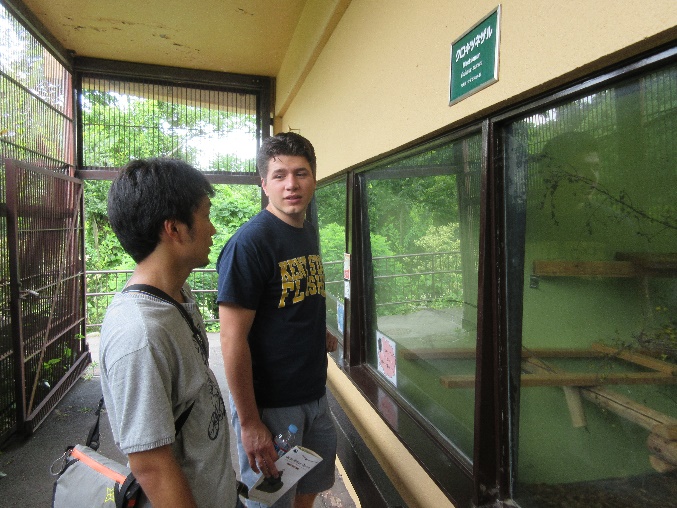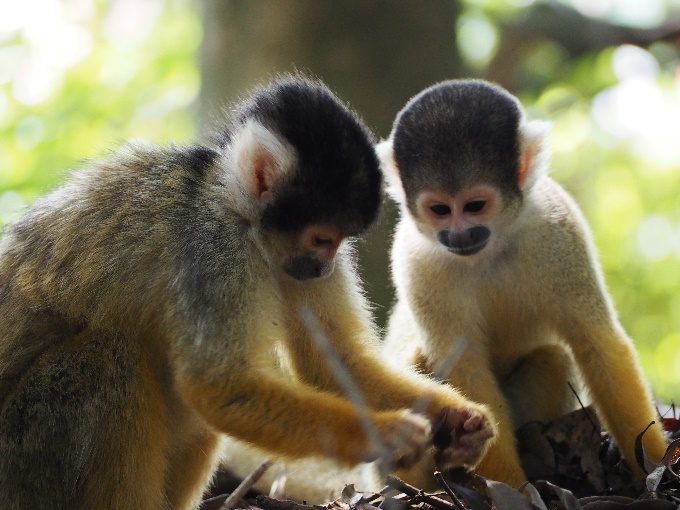WEEK 3 - JUNE 28
Konnichi wa from the Primate Research Institute – Week 3 (June 28)
I’ve been in Japan for three very exciting weeks so far. I’m broadening my scientific training and slowly building my Japanese language skills. This past week, I met many more faculty and students here at the PRI with whom I’ve enjoyed discussing research plans, exchanging stories, and simply just getting to know everyone. For example, on Wednesday I participated in a “Visualizing Data Workshop” hosted by Dr. Andrew MacIntosh, a Canadian primate ecologist here at the PRI. Not only did I learn a good amount about the best ways to visually represent different forms of data, I also met several new friends in different departments of the PRI, including students Sayuri, Sofi, Josue, and Hyeungjin, hailing from Brazil, the U.S., Puerto Rico, and South Korea. So far, it seems that I’m finding a balance of research, training, and fitting in to the PRI. I can’t wait for our research team to hit our stride and really tackle some tough questions about primate reproduction, as well as strengthen our social bonds akin to many of our primate relatives.
A Quick Primer on RT-PCR
As I mentioned in my previous blog post, a component of my summer project includes a technique called RT-PCR, or Reverse Transcriptase Polymerase Chain Reaction. Remember, a gene is a segment of DNA that produces a molecule of RNA, which then gets read and translated into a protein like this:

With RT-PCR, an enzyme called Reverse Transcriptase will find the RNA in a given tissue then reverse transcribe, as appropriately named, the RNA back into DNA. Now you might ask, why do we want this DNA? Well, when you go from RNA back to DNA, you only produce the DNA that codes for the proteins. This is important because much of a DNA molecule consists of non-protein coding sequence! Then, all you have to do is perform a PCR, which is a reaction that acts like a gene photocopier. Your end product is millions of copies of a DNA segment that contain only the protein-coding information; what a time to be alive!
The general steps of RT-PCR. After many PCR cycles, your DNA segment can be reproduced 235, or nearly 35.5 billion times (Singh et al. 2014; Critical Review on PCR).
With our Japanese macaque project, we will use RT-PCR to isolate genes that code for proteins involved in spermatogenesis and germ cell development. Ideally, we will find differences in gene expression between male monkeys from the breeding season and those from the non-breeding/birthing season. This week, we have finished designing primers for our 60 genes of interest so now all we have to do is order them from a biotech company. Remember from my last post, a primer is a small segment of DNA that binds to your larger target gene – this is the first and most crucial step in the photocopying process. Lastly, I’d like to encourage you to scroll back up and look at the title of this section, just in case you missed the pun.
A visit to the Japan Monkey Centre
This past week also included some great non-laboratory experiences: I gave a seminar to the Molecular Biology section describing my research at Â鶹´«Ă˝, and I tried karaoke with other visiting international researchers. Perhaps the best experience, though, was a Saturday afternoon trip to the Japan Monkey Centre with two labmates, Ito and Akihiro. This is also the only event from which I have great pictures!
(Left) Akihiro is a PRI graduate student who knows a great deal about lemurs, the primates he studies at the Japan Monkey Center! (Right) A couple of ring-tailed lemurs finding some shade from the atsui (hot!) Japanese afternoon. Photo credit: Ito-kun
(Left) In addition to monkeys and prosimians – like the lemurs above – the Japan Monkey Center is also home to several apes. Here is a 2-year old common chimp relaxing in his outdoor habitat. (Right) The JMC has a really nice Bolivian squirrel monkey habitat that you can actually walk through. Here is one individual showing another how to find and crack open fallen tree nuts; amazing! Photo credit: Akihiro-kun
That’s it for this week! I hope you learned, or maybe even reviewed, some interesting things about RT-PCR. Also, much thanks to Akihiro and Ito for letting me use those wonderful primate pictures! If you’re wondering how my attempt at getting a haircut in Japan went, you’ll have to wait. I had it scheduled for Sunday, but the Japan rainy season prevented me from venturing into town. Until next week, matane!
This research is funded by the National Science Foundation East Asia and Pacific Summer Institutes for U.S. Graduate Students (EAPSI) in collaboration with the Japan Society for the Promotion of Science (JSPS).













